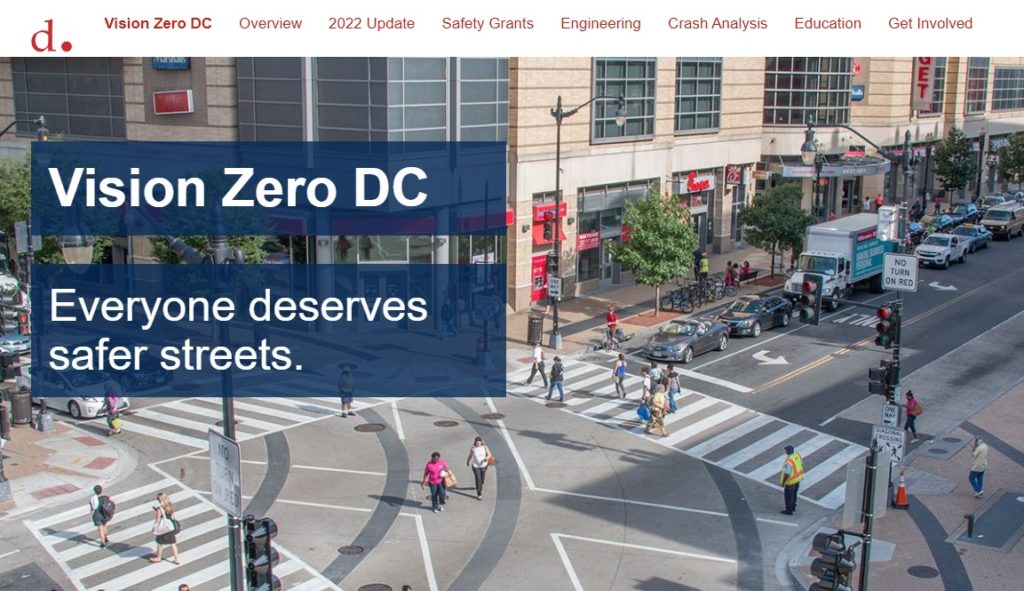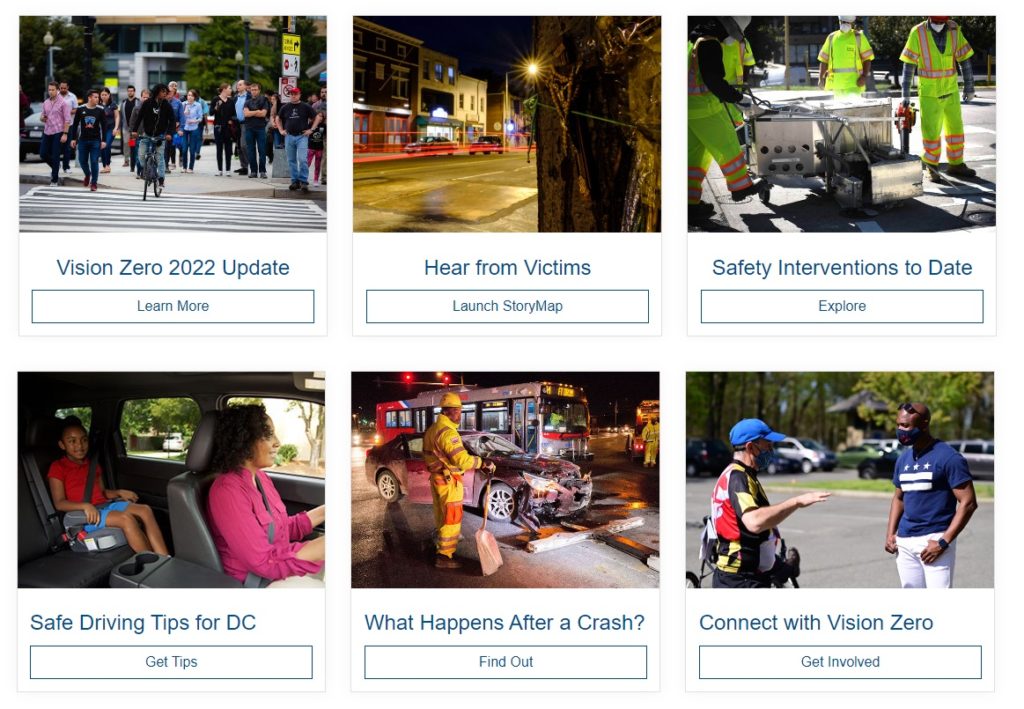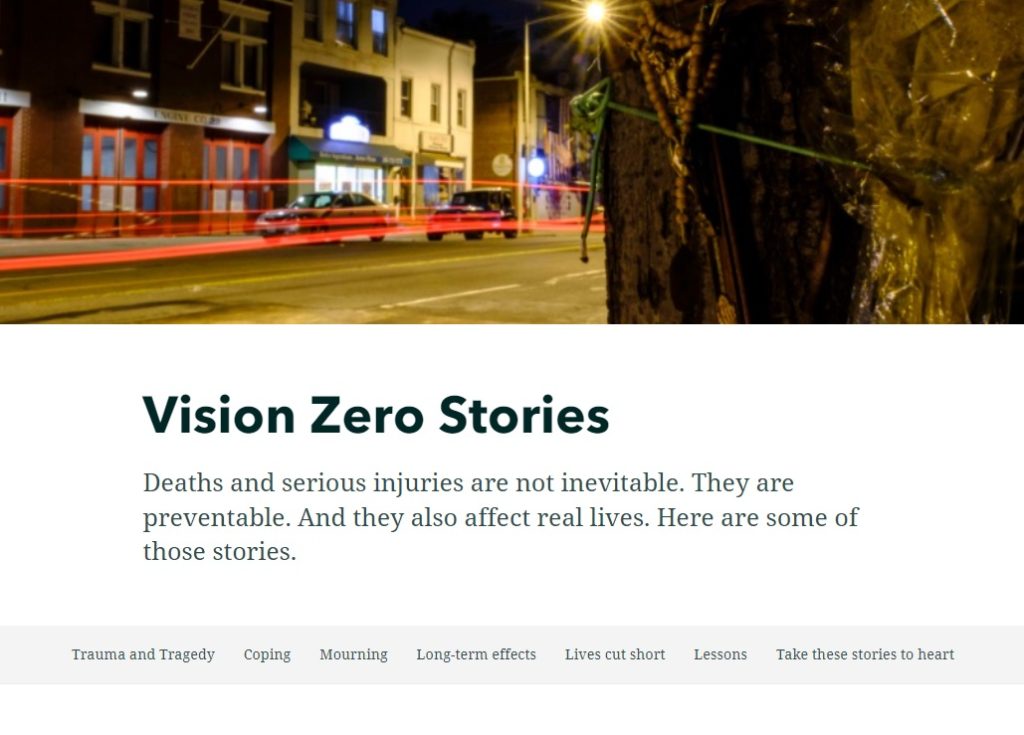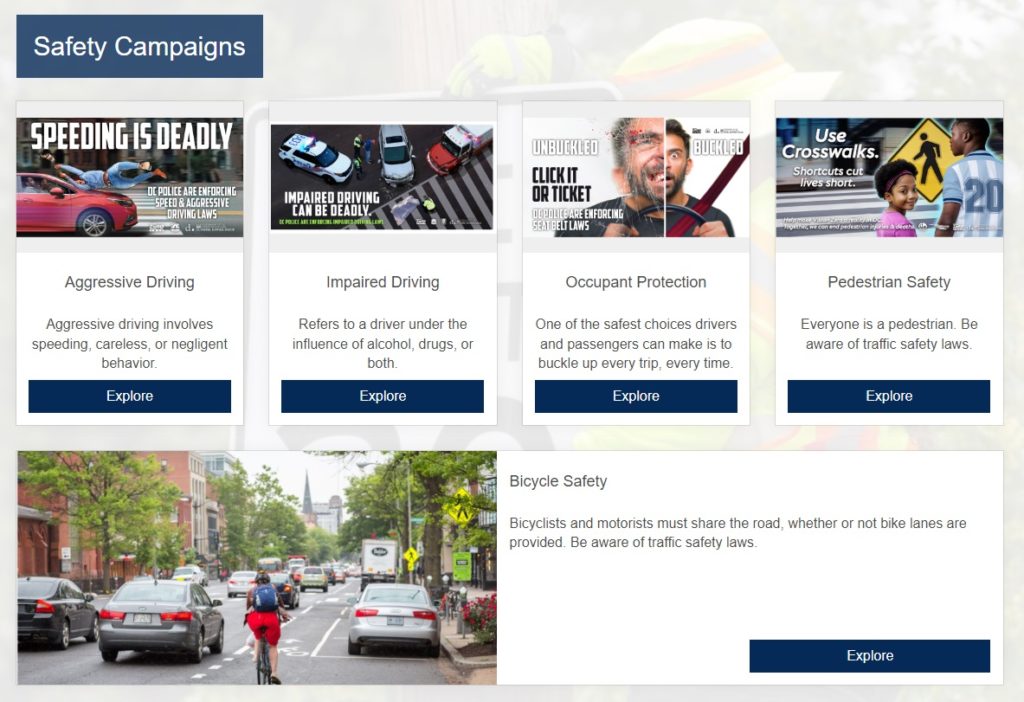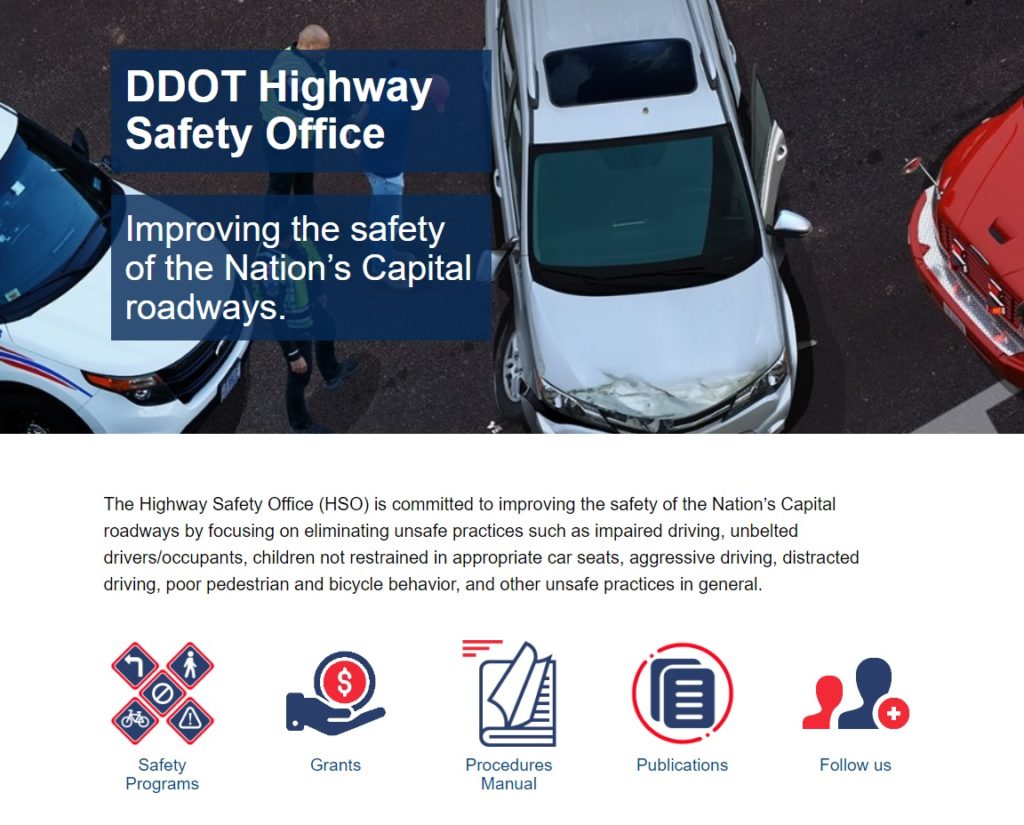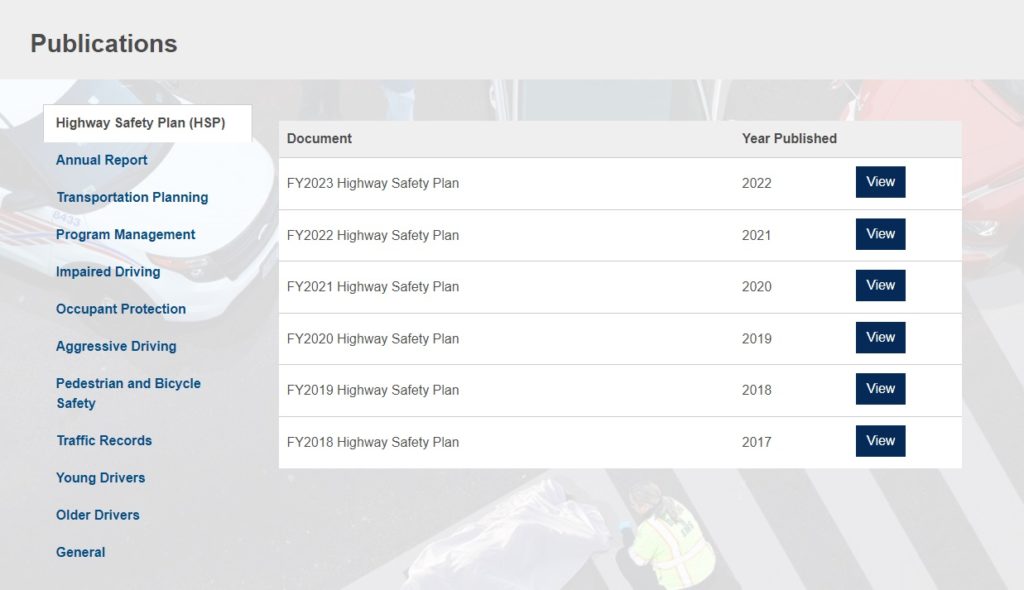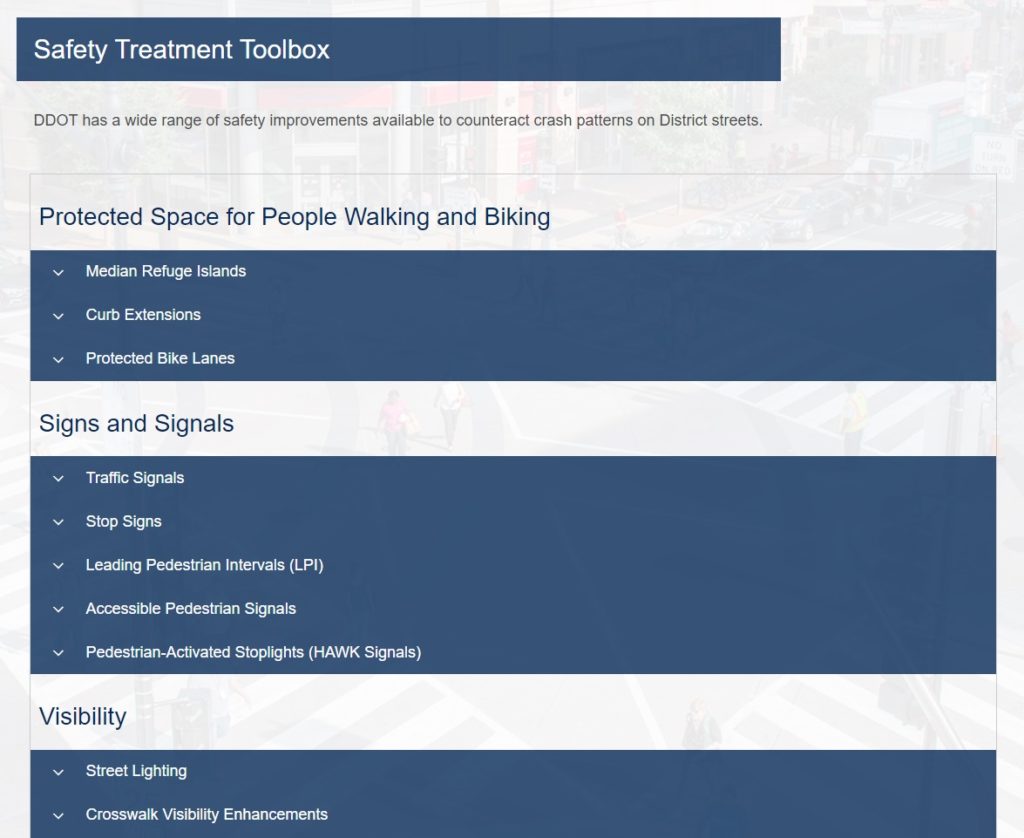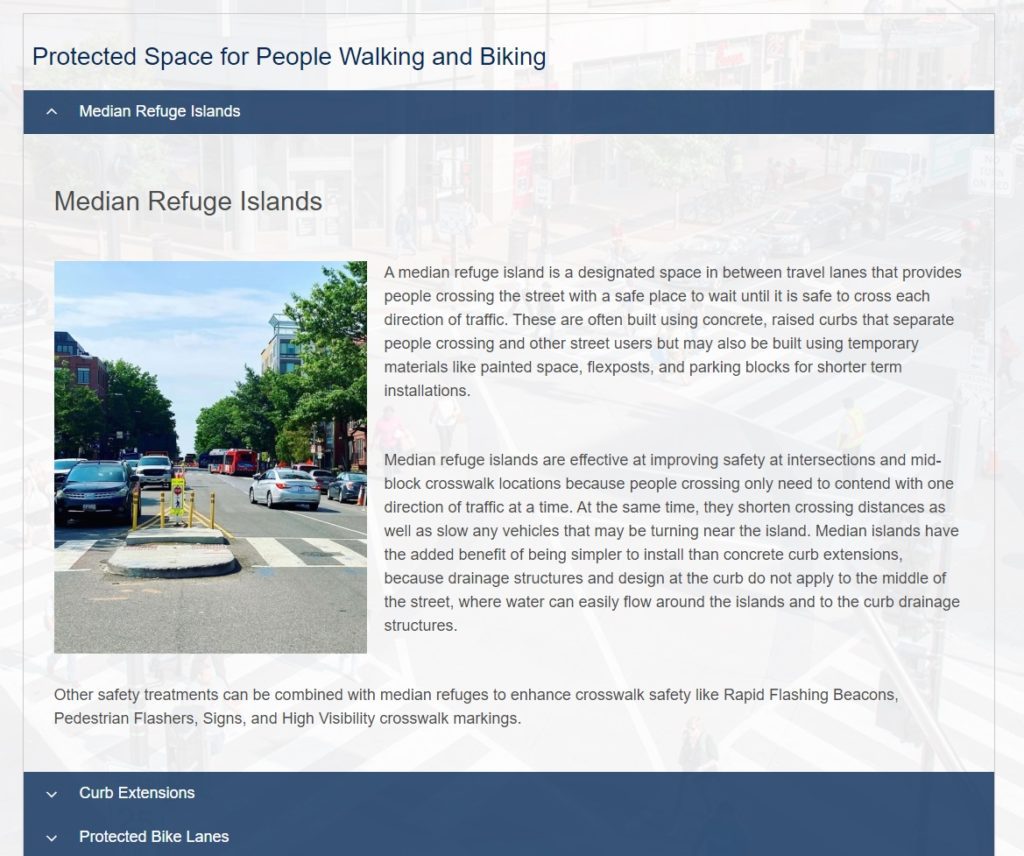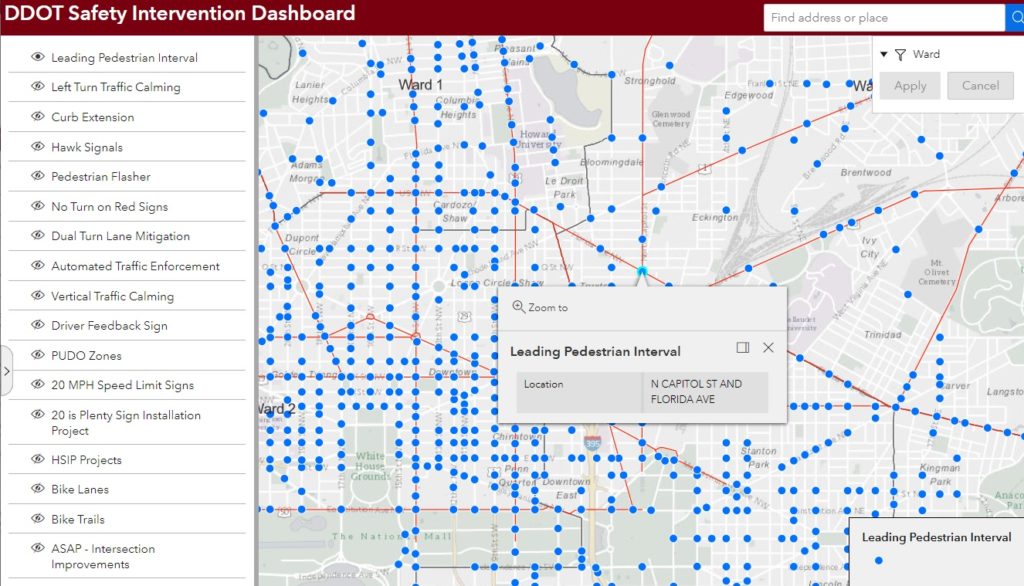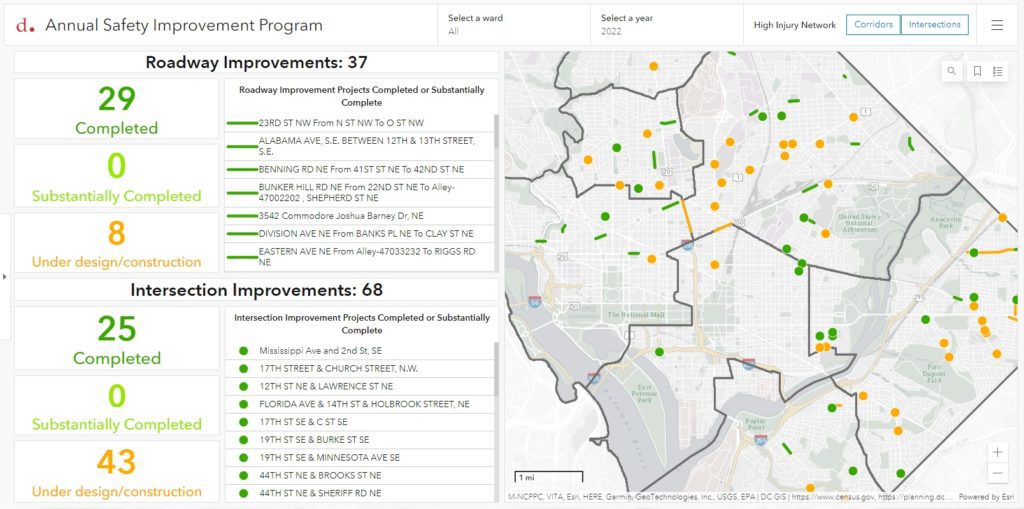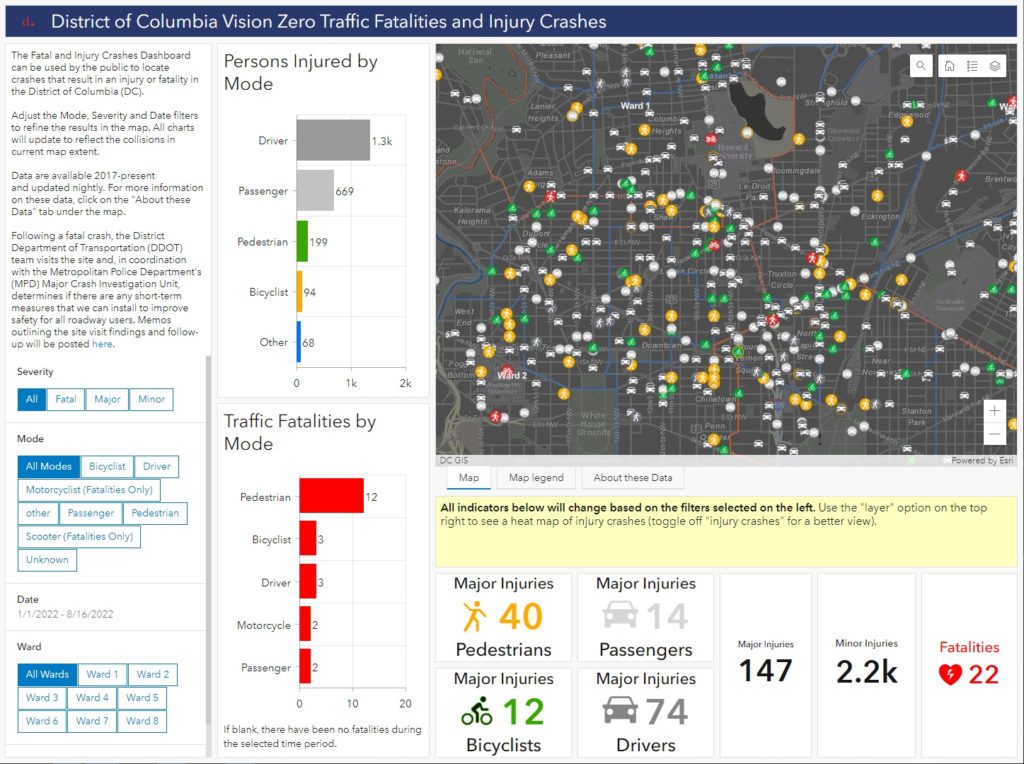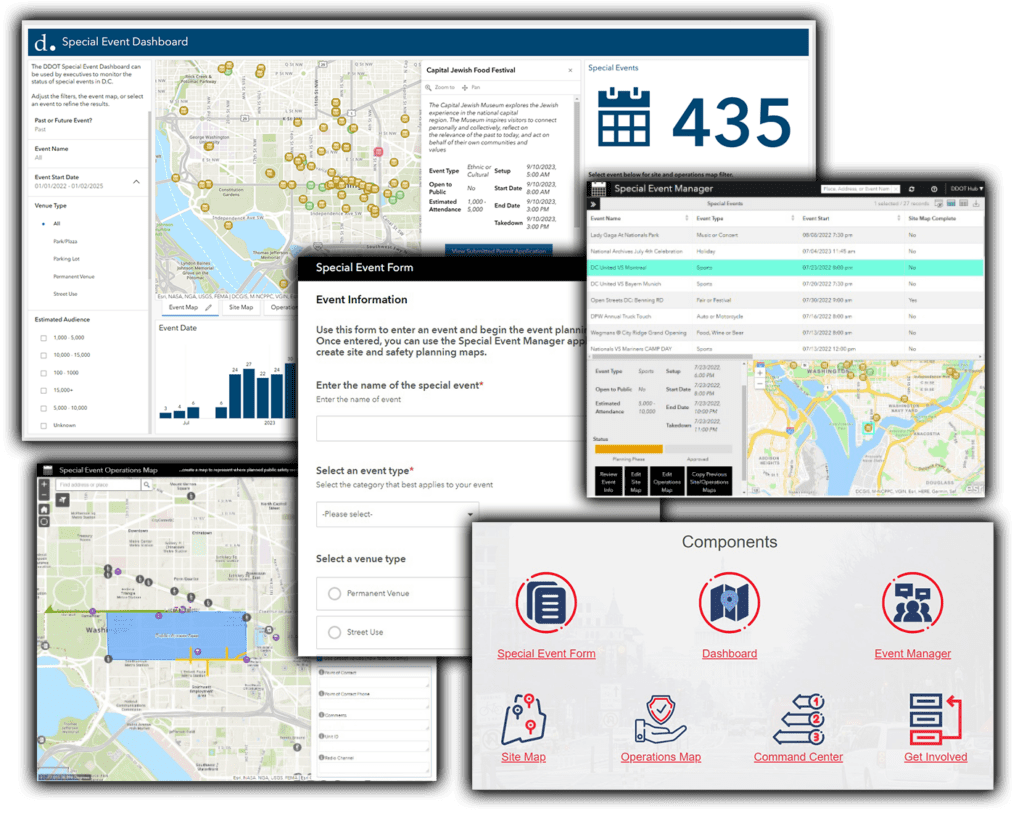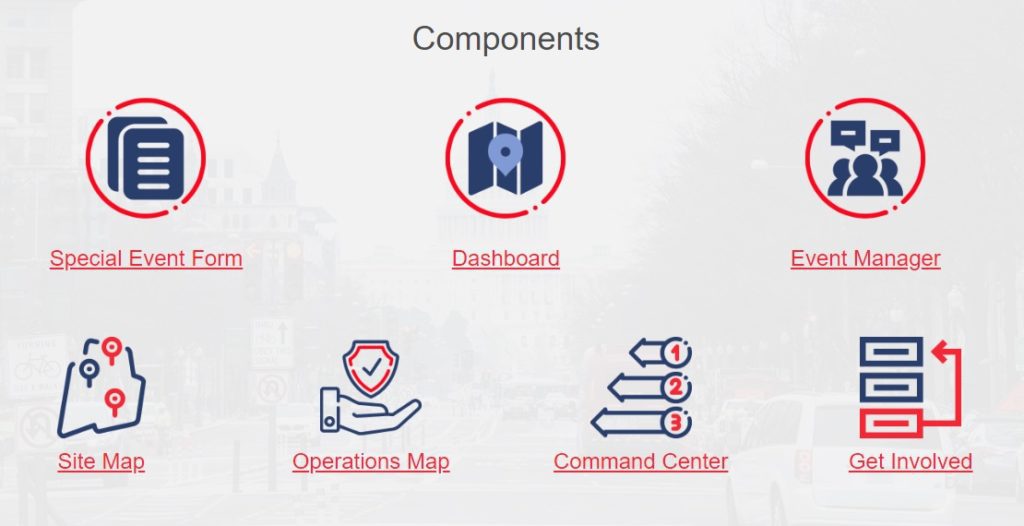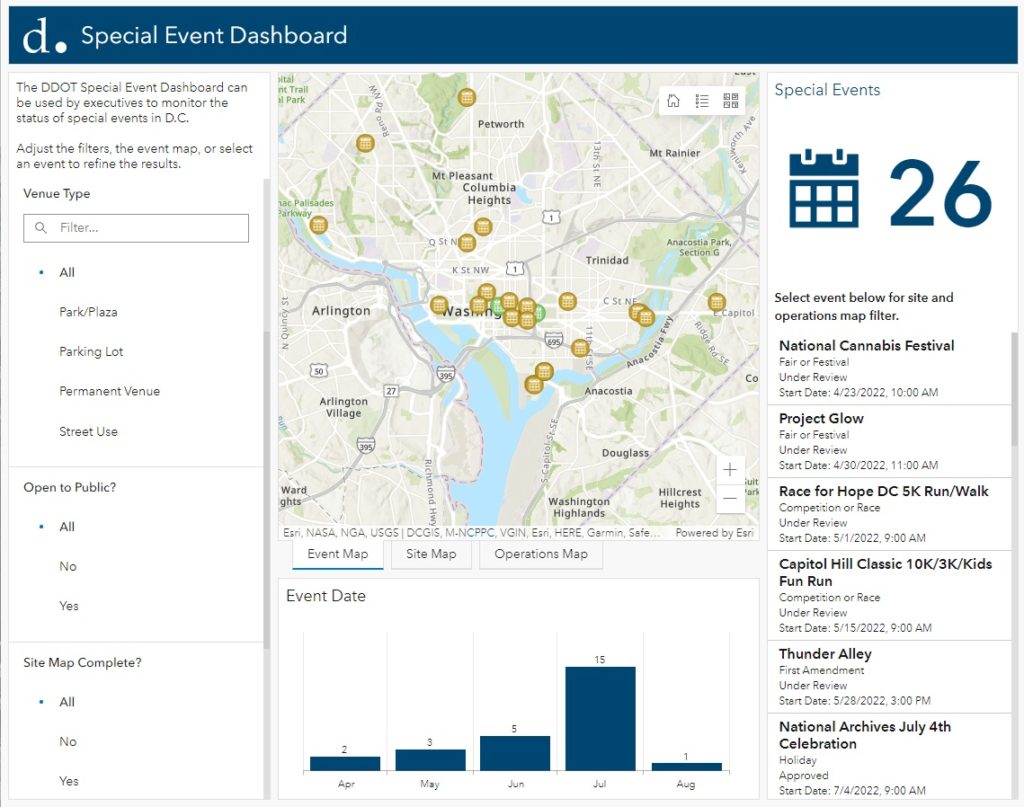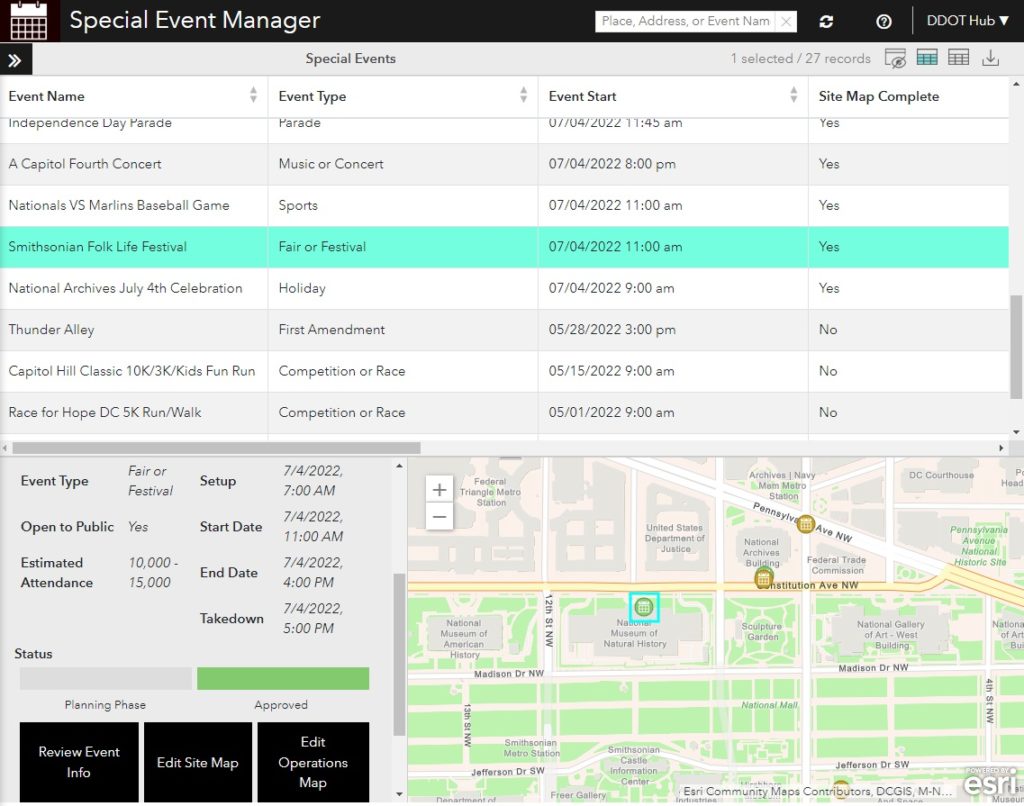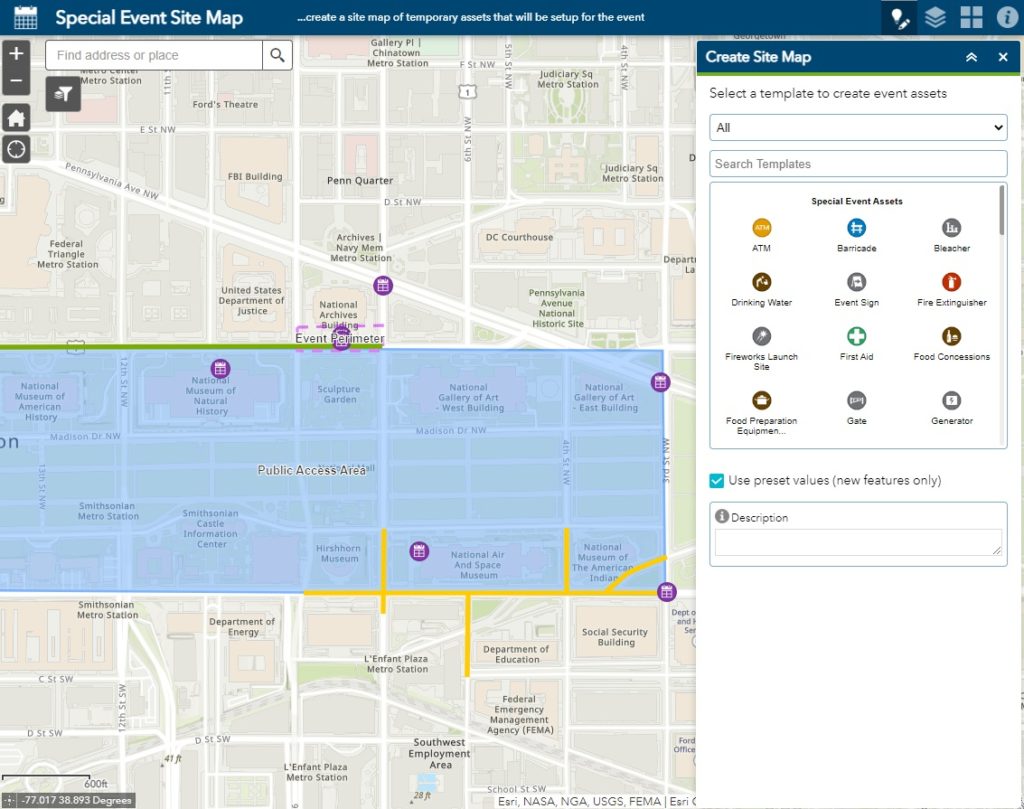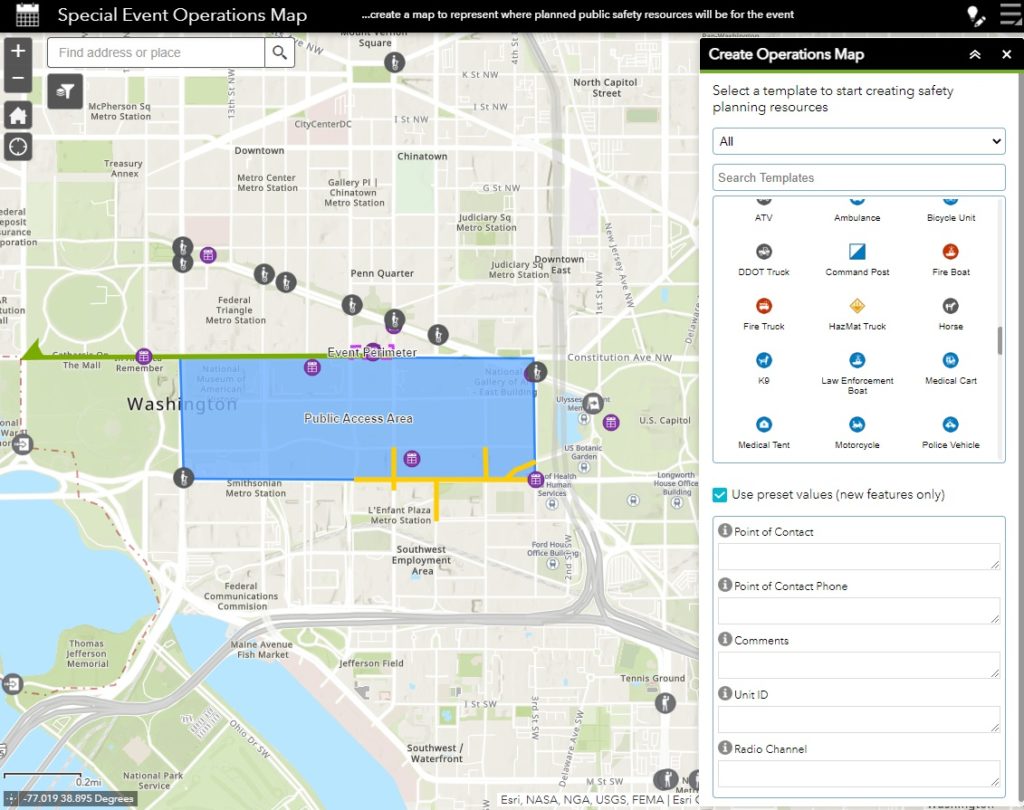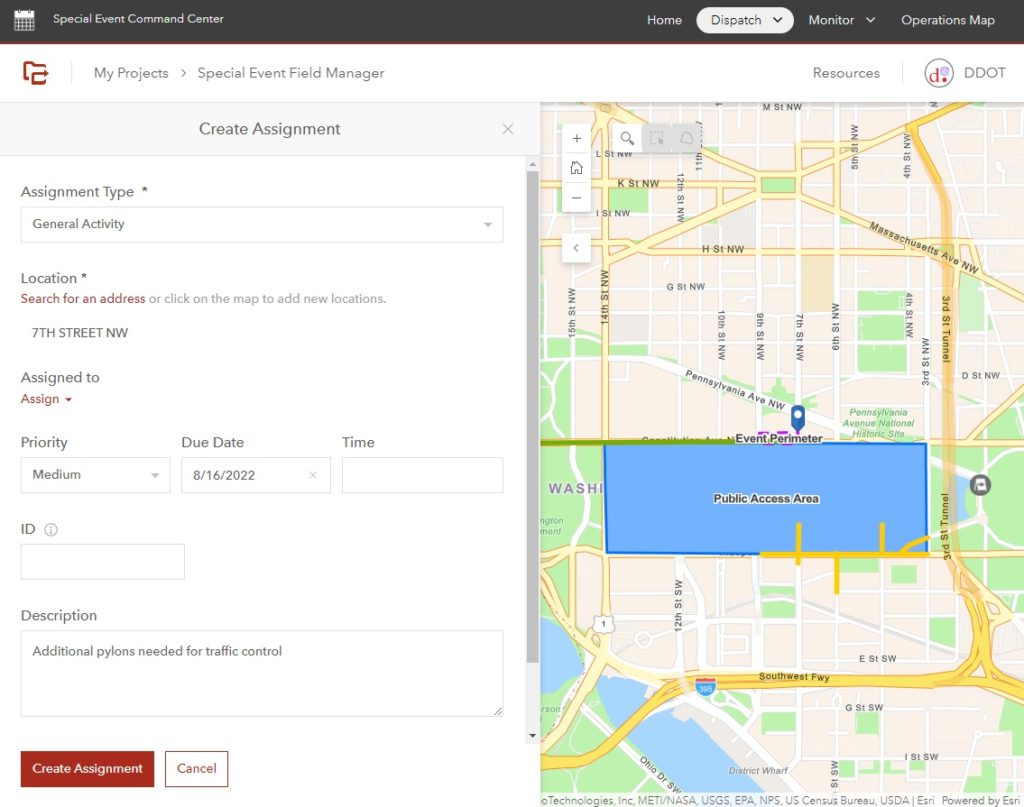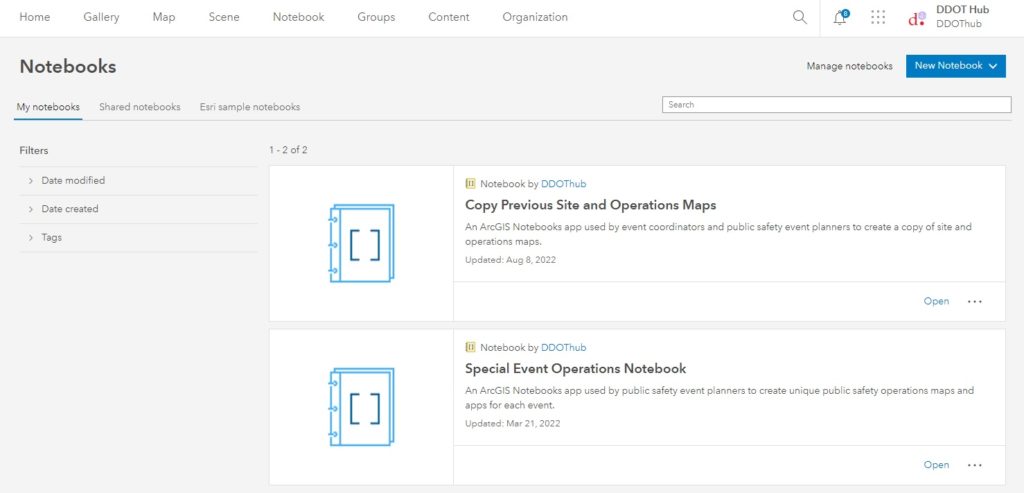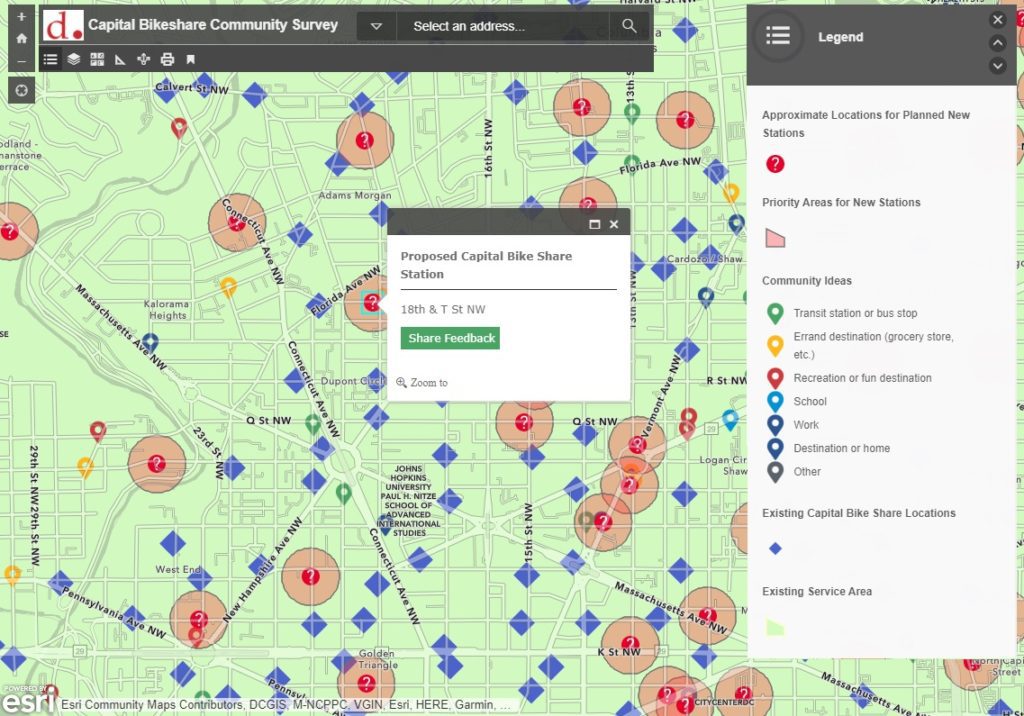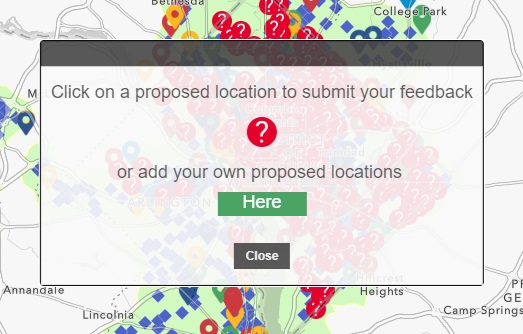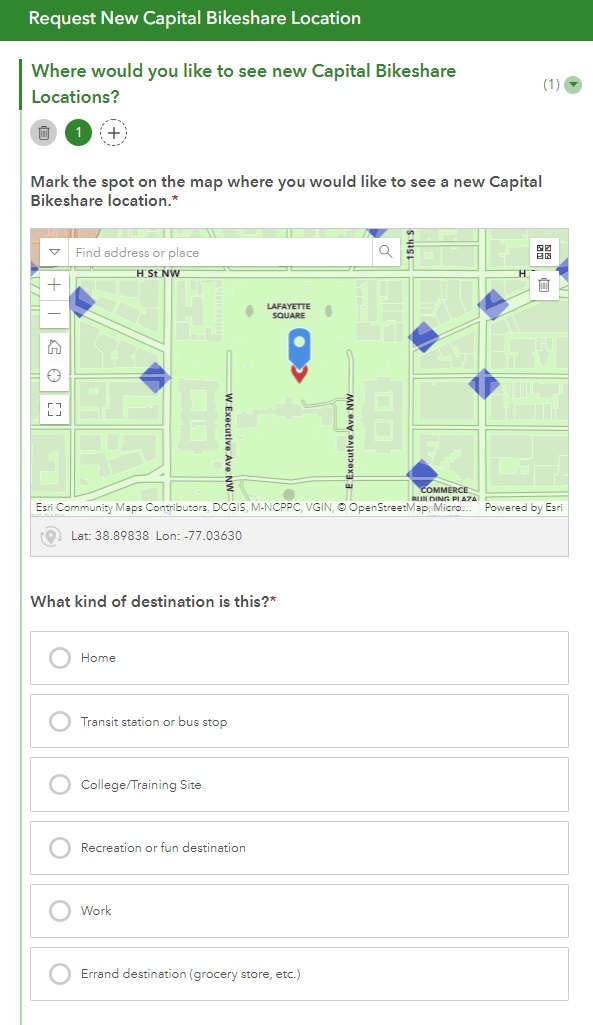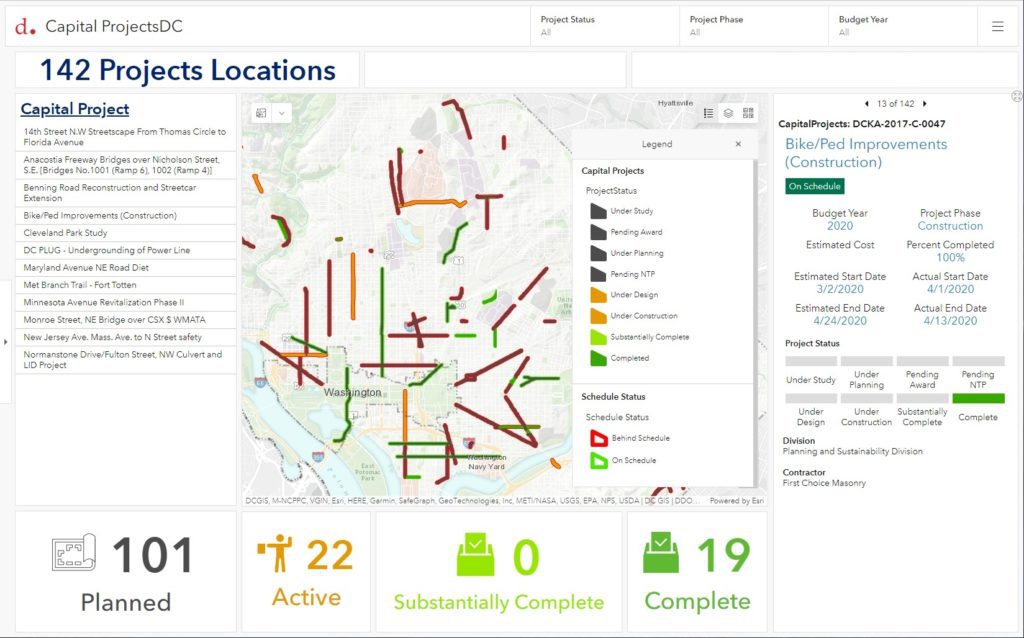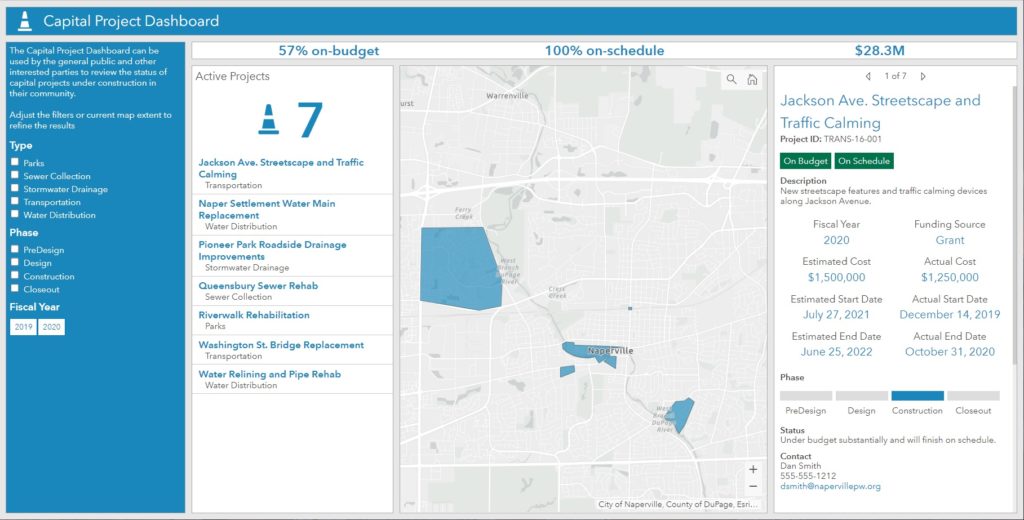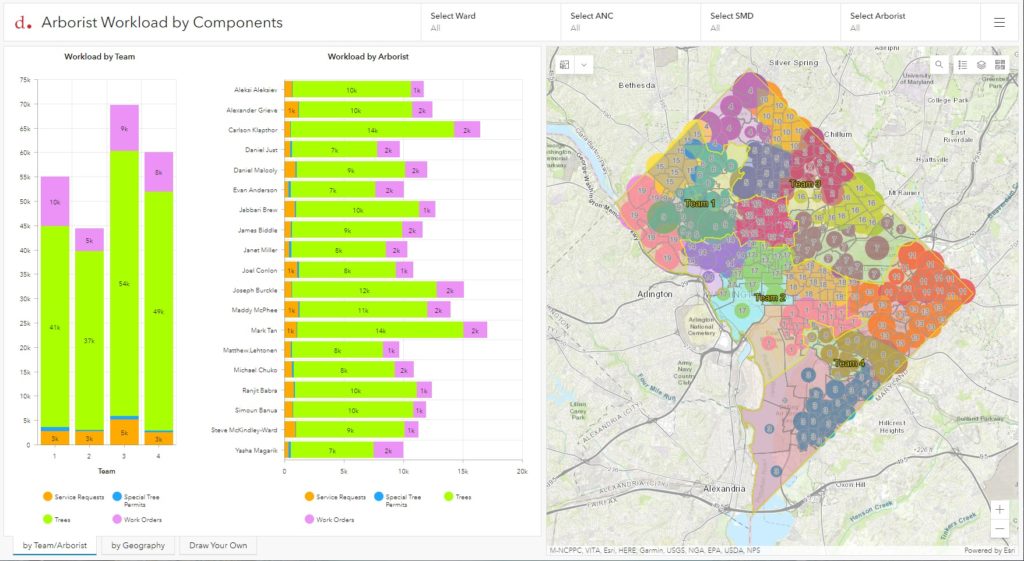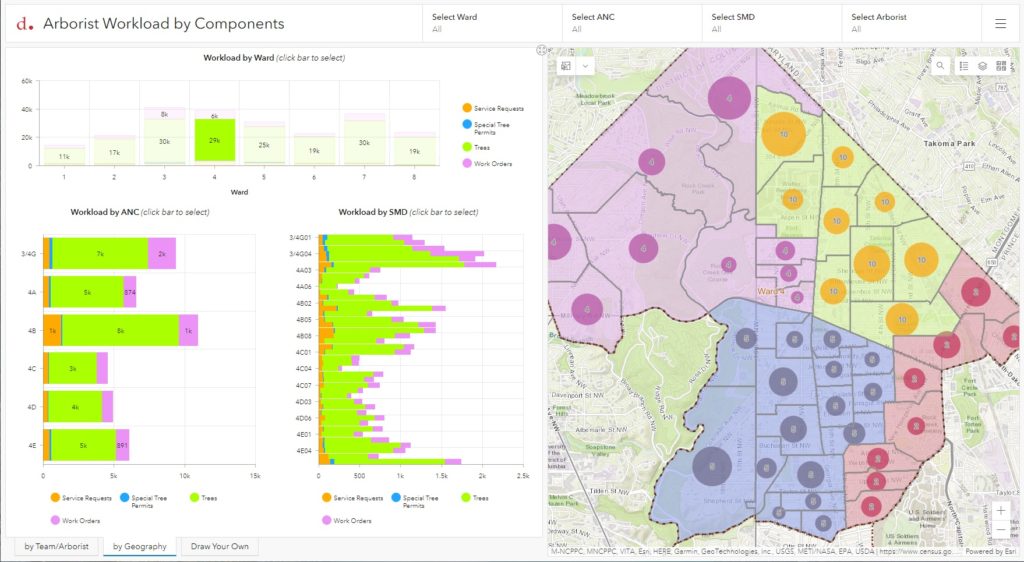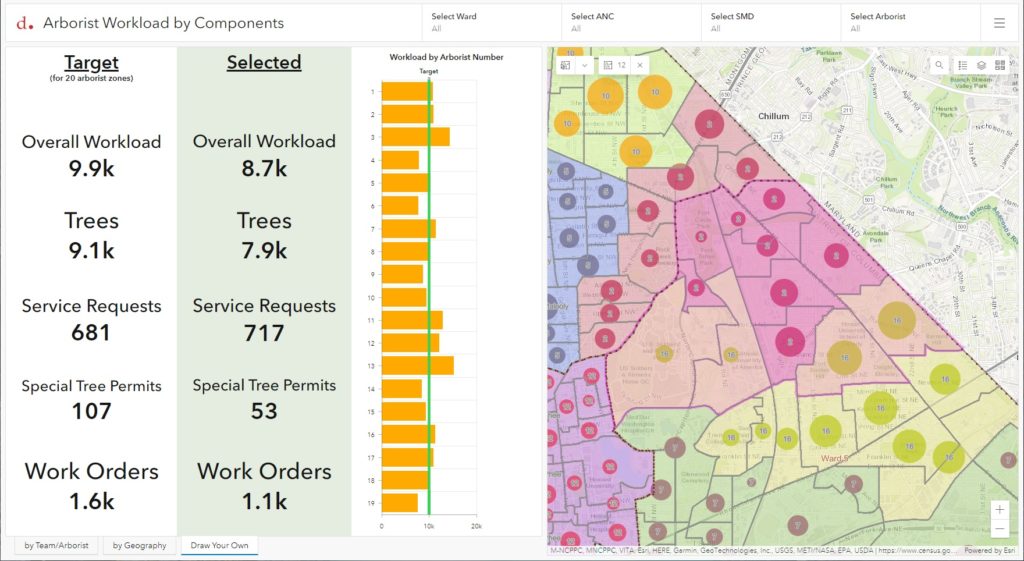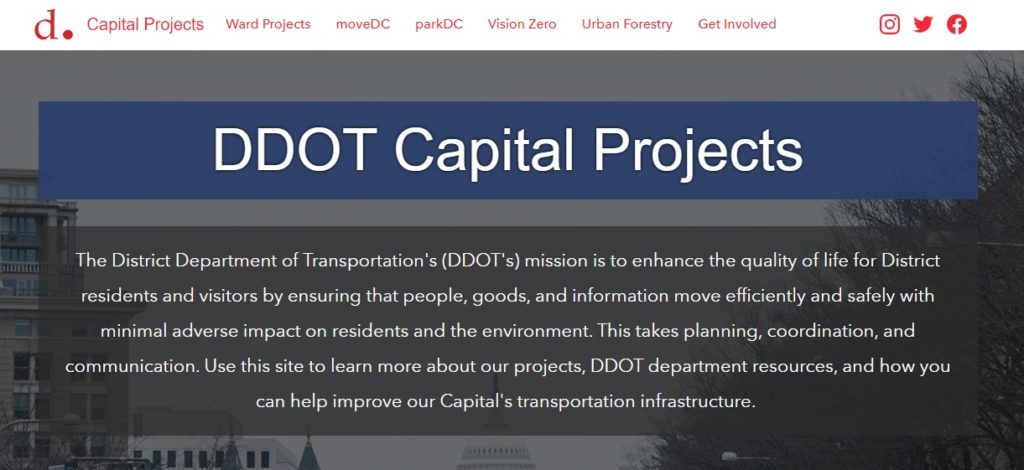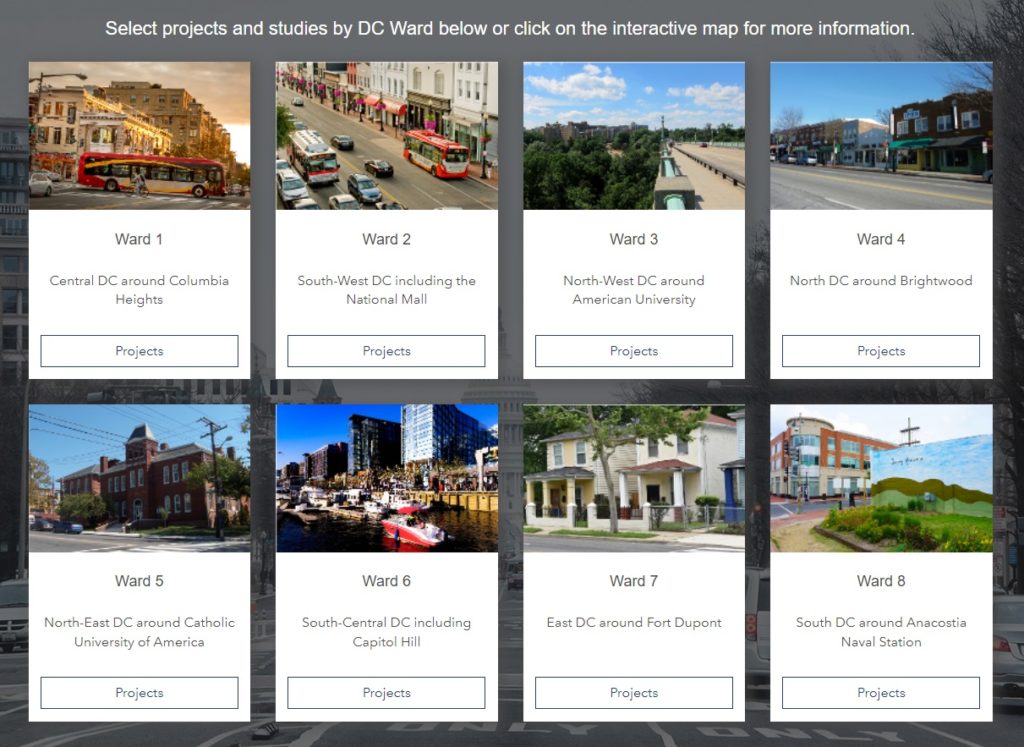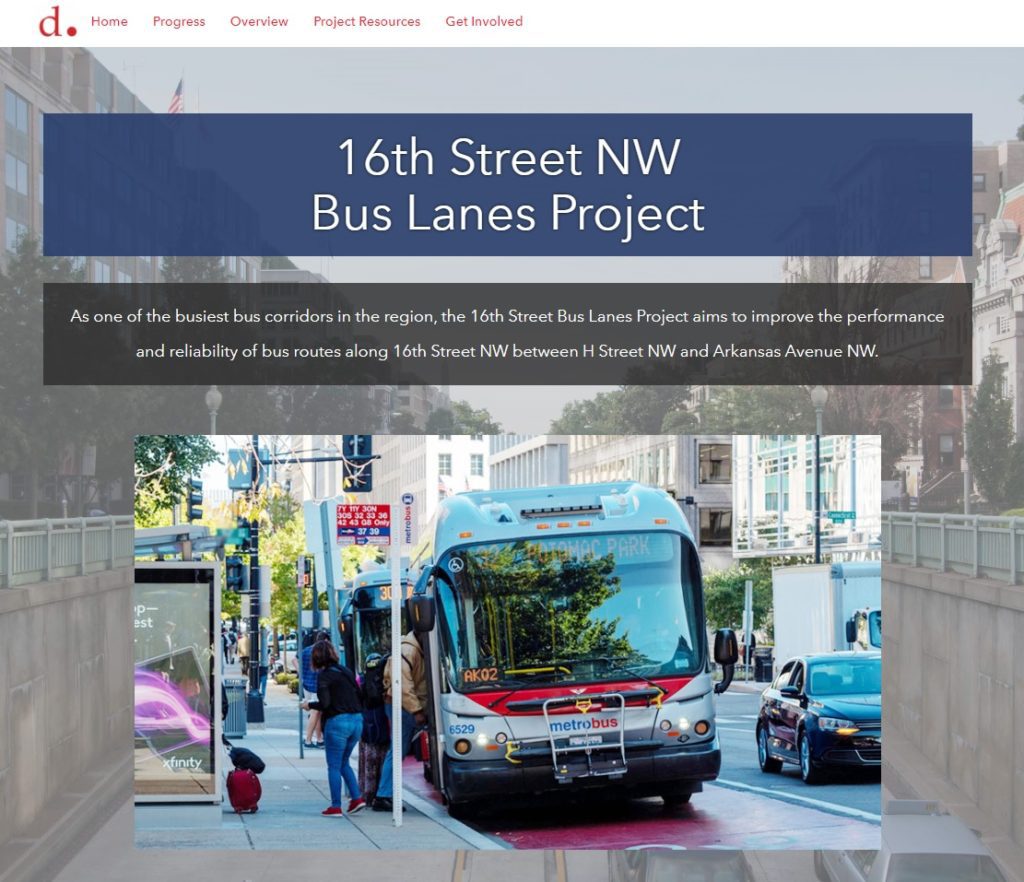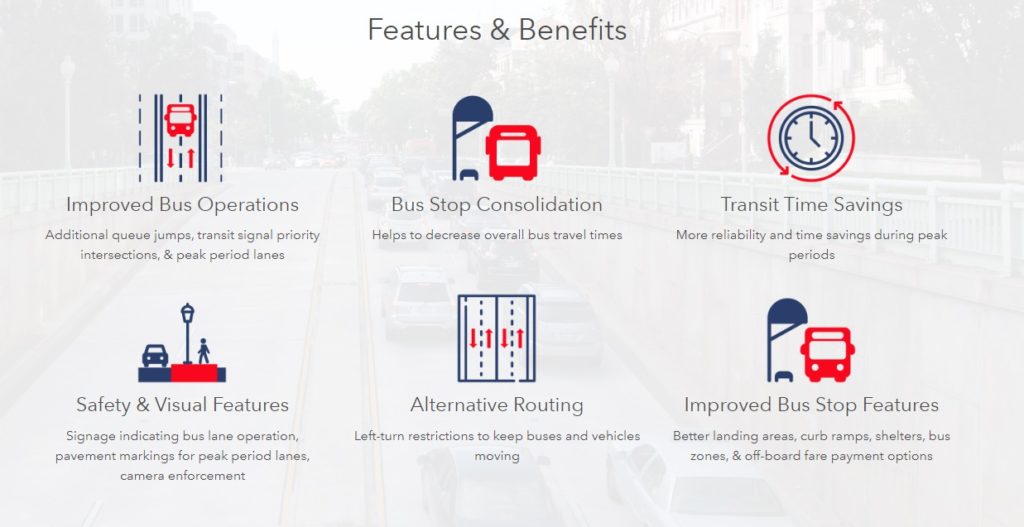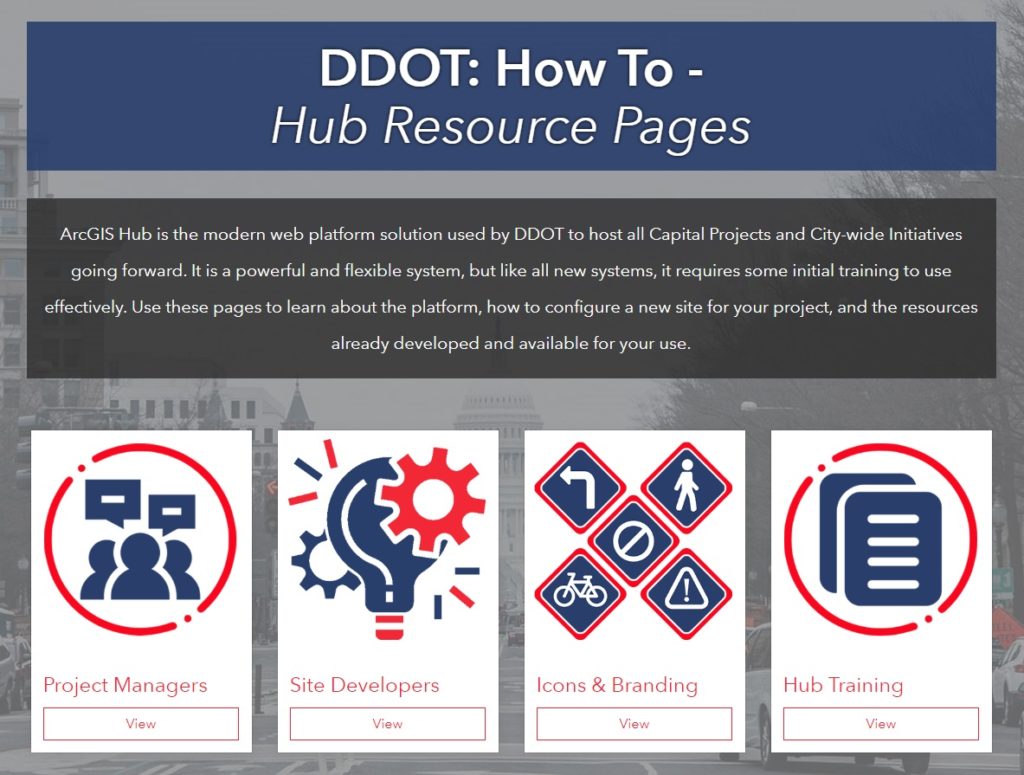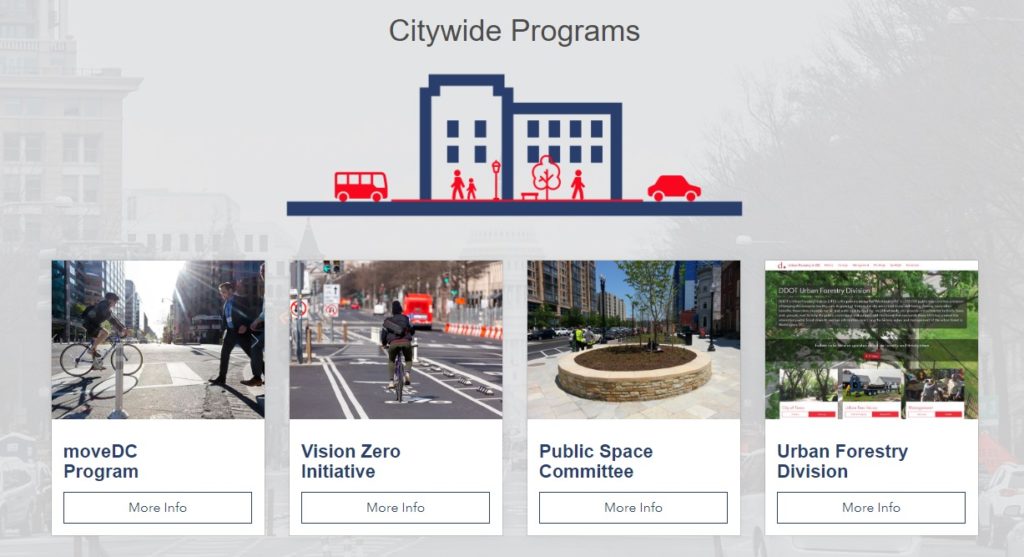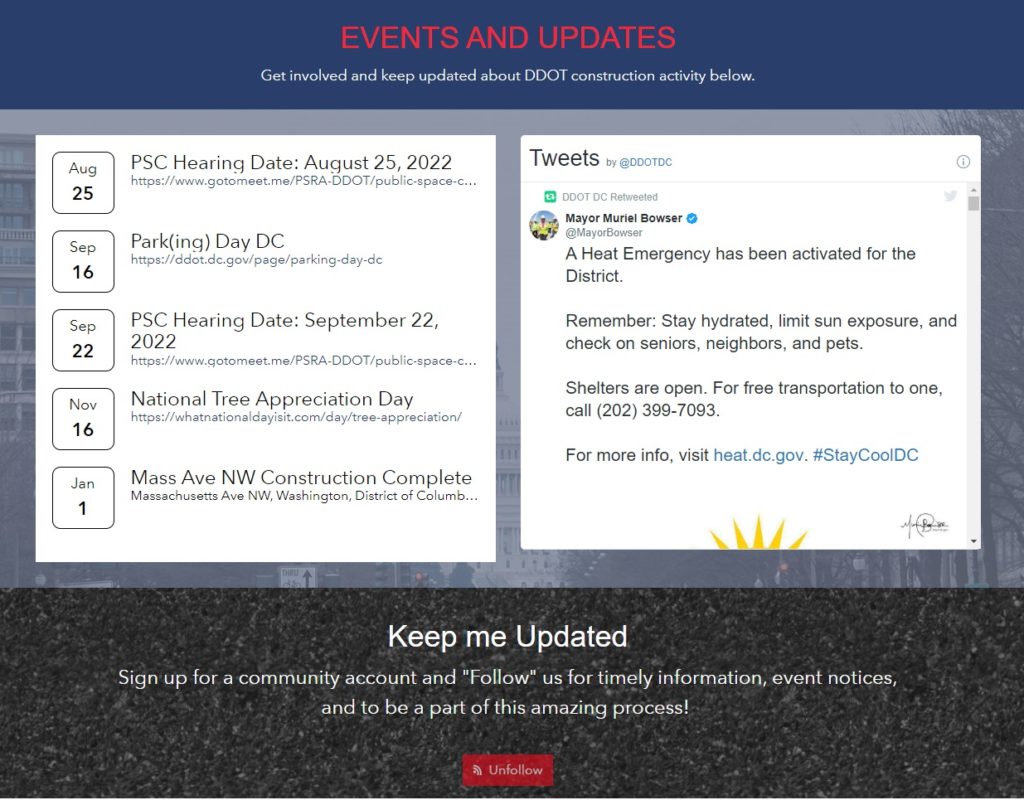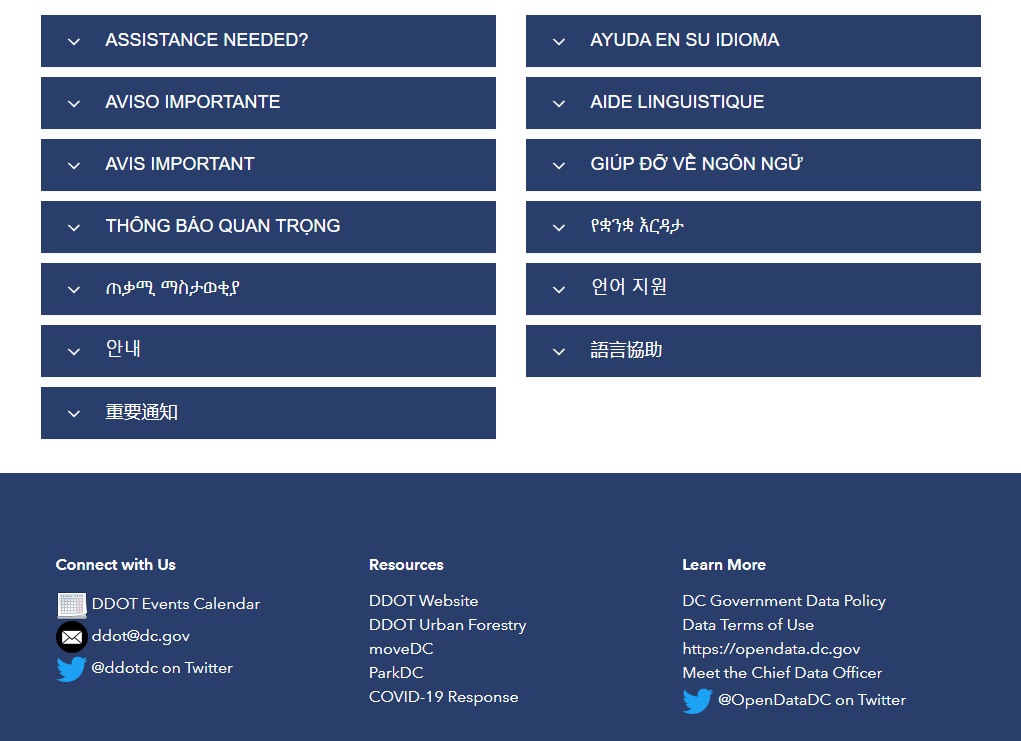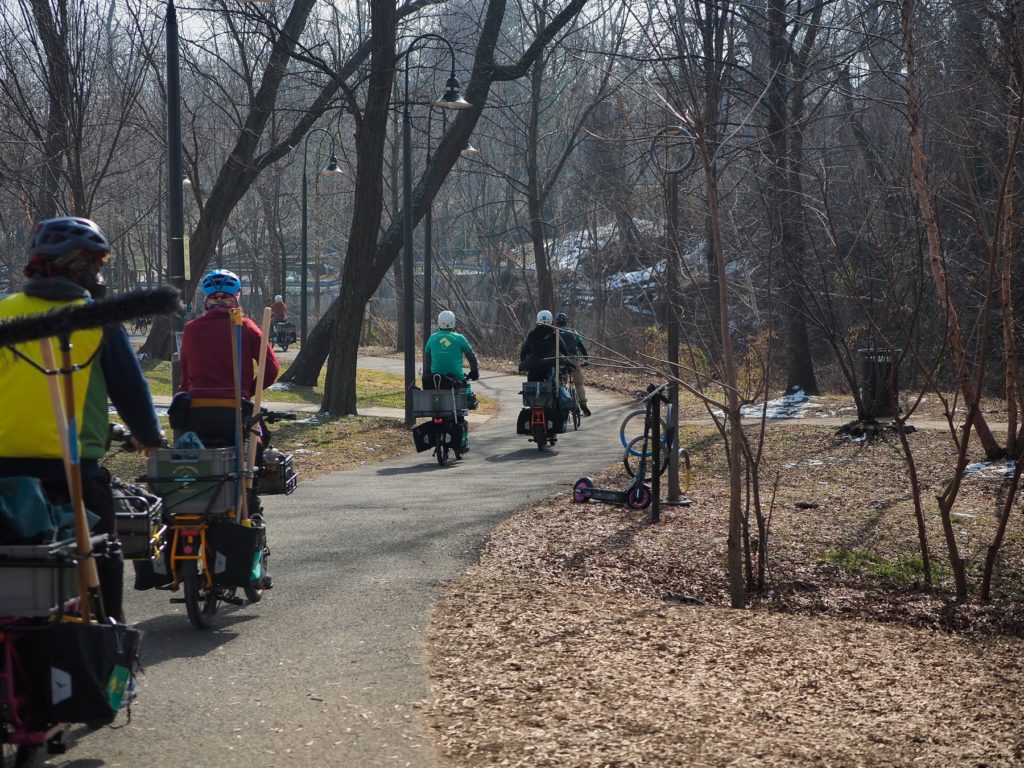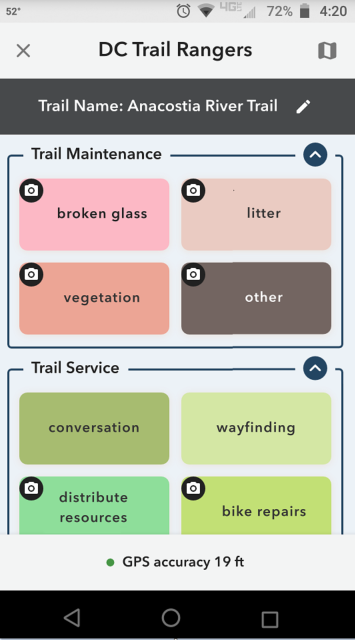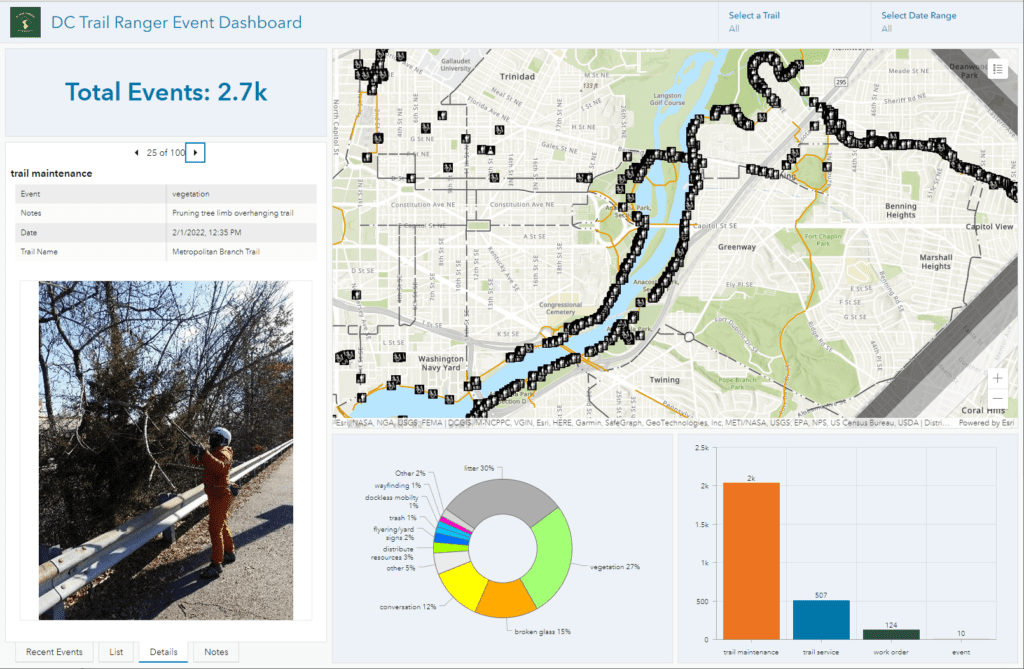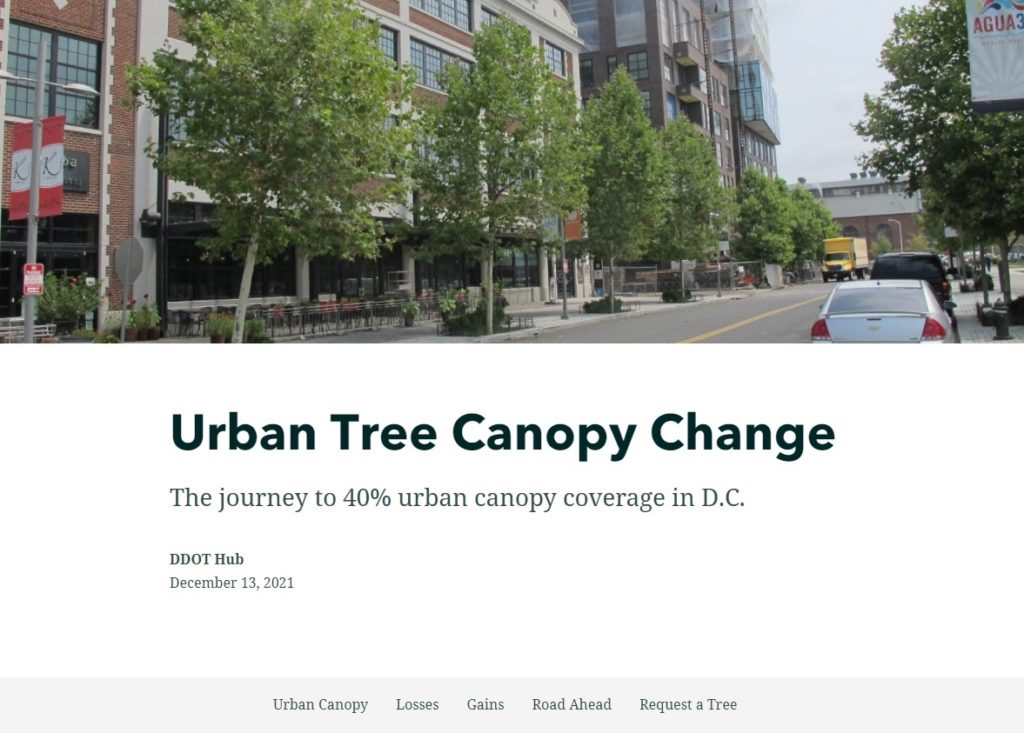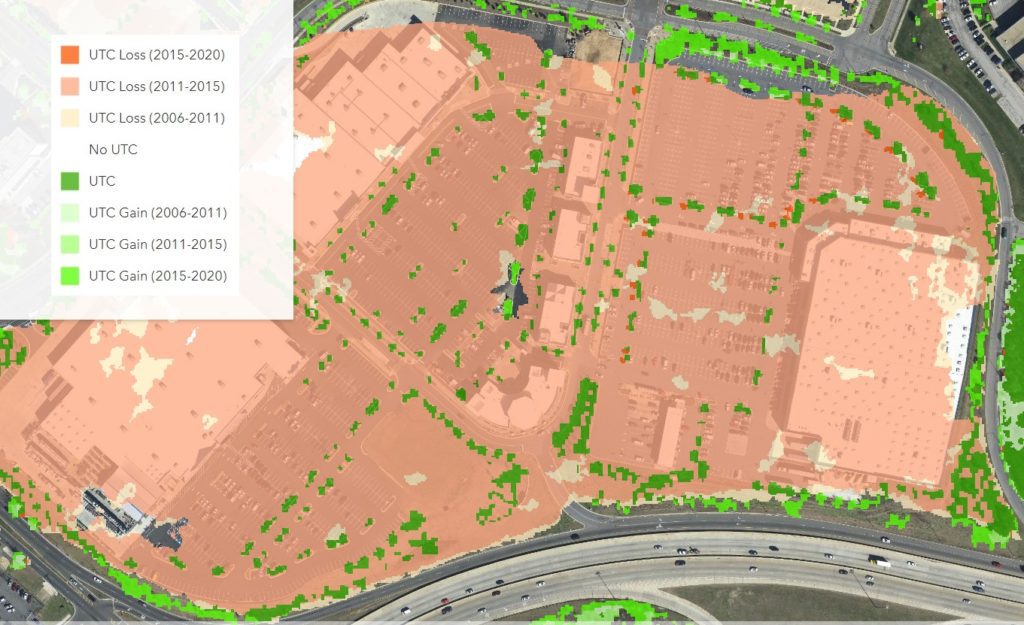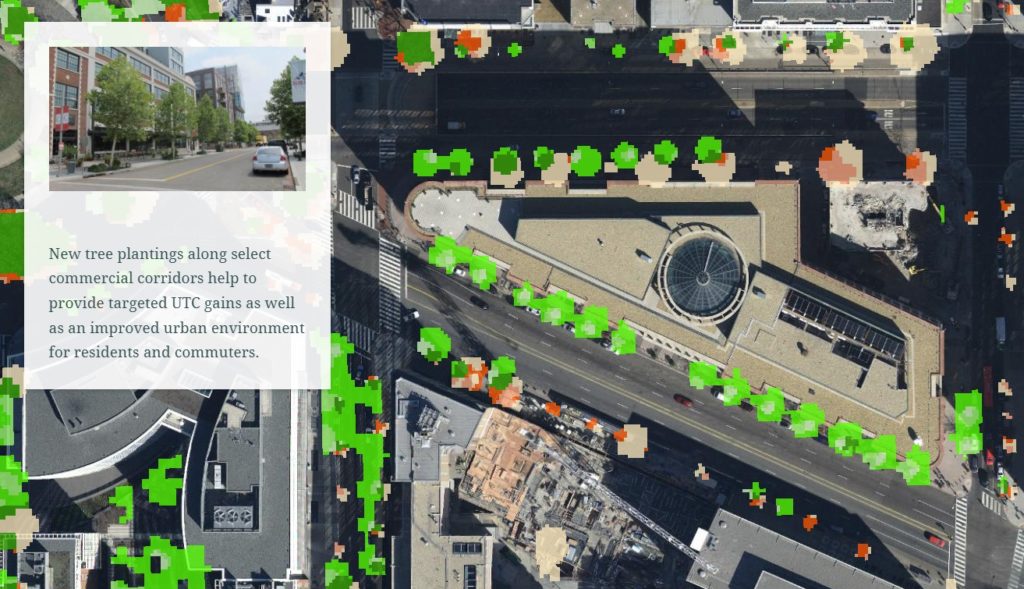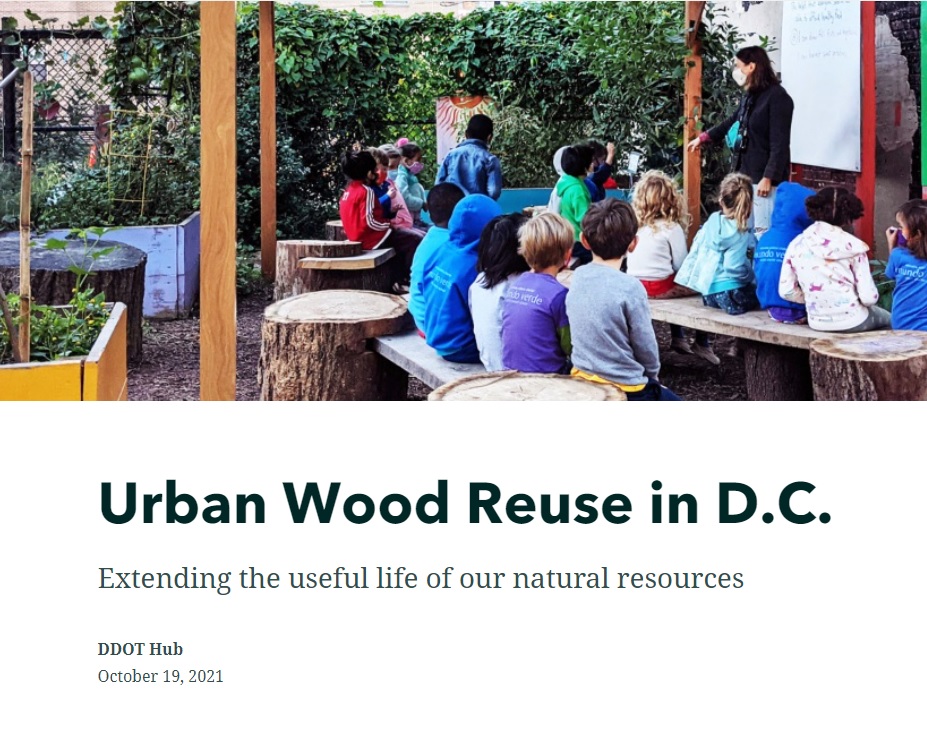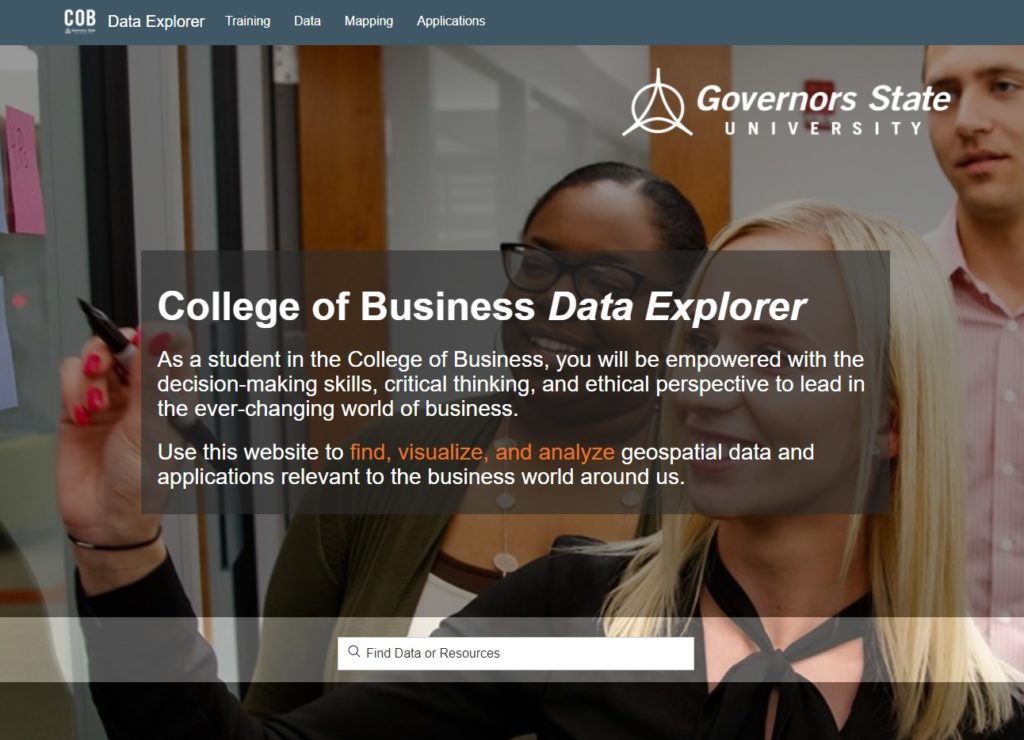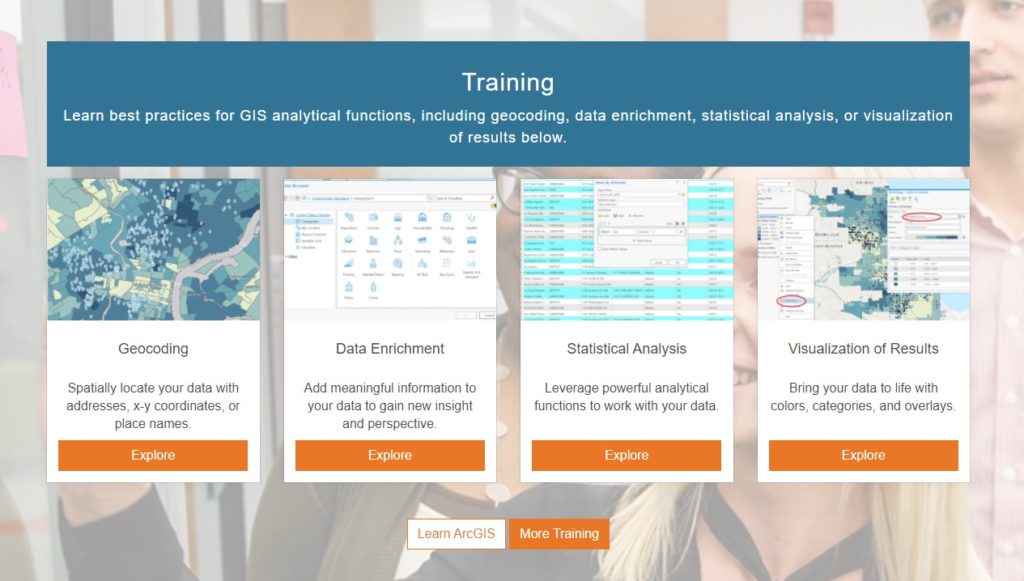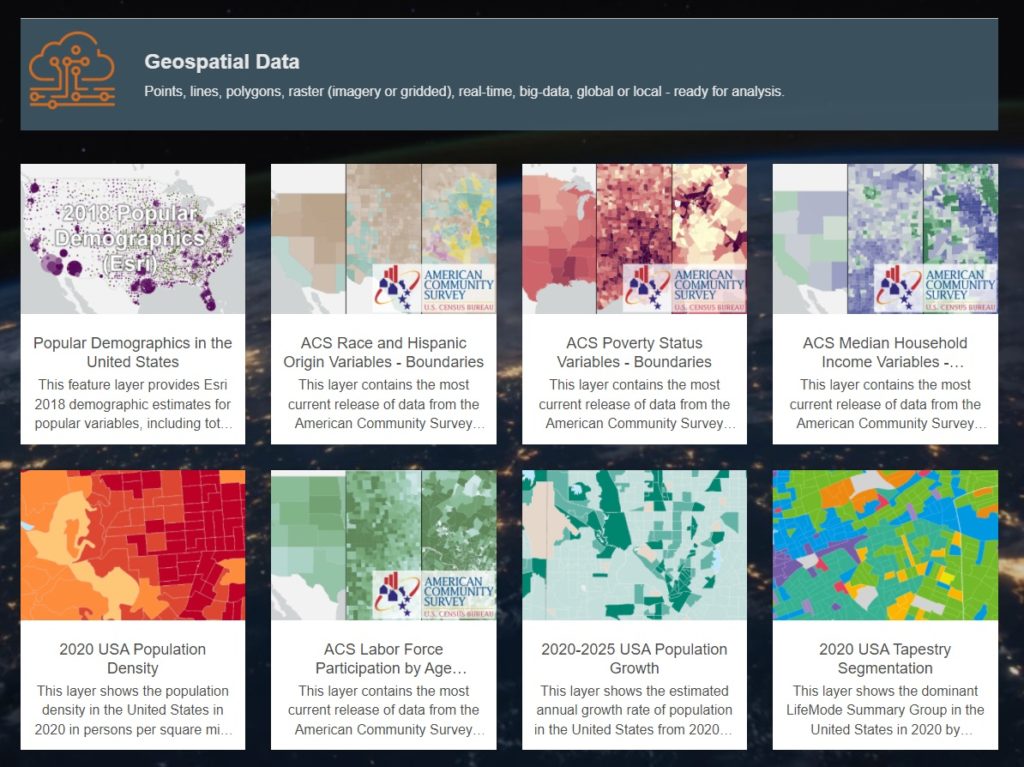District of Columbia Mayor Muriel Bowser launched Vision Zero in 2015 to inspire and transform DC’s roadway safety efforts and to set DC’s sights on a goal of zero fatalities or serious injuries on District streets. Since then, the District Department of Transportation (DDOT) has shifted to designing streets that are safe for everyone, working closely with community members to identify problems and build solutions. As part of a new community outreach effort, SymGEO was honored to help DDOT build the new Vision Zero DC website using ArcGIS Hub technology. Read the official press release from DDOT for this exciting website launch, as well as the comprehensive ArcNews article entitled “Washington, DC, Pursues Equity and Transparency in Vision Zero Campaign” featured on the front page of the Spring 2023 edition.
“The new Vision Zero DC website will help us work closely with community members to identify problems and build solutions. SymGEO iterated quickly and efficiently on design ideas and built a very engaging platform solution for DDOT.”
– DDOT Vision Zero Director
The Vision Zero DC site is organized into easily navigable sections based on audience interest and is designed to be mobile-responsive and broadly accessible.
A poignant look at the human costs of dangerous driving and unsafe behaviors is presented in Vision Zero Stories, developed using ArcGIS StoryMap technology.
The Education page features educational campaigns that help to promote safe driving and pedestrian habits throughout the District. 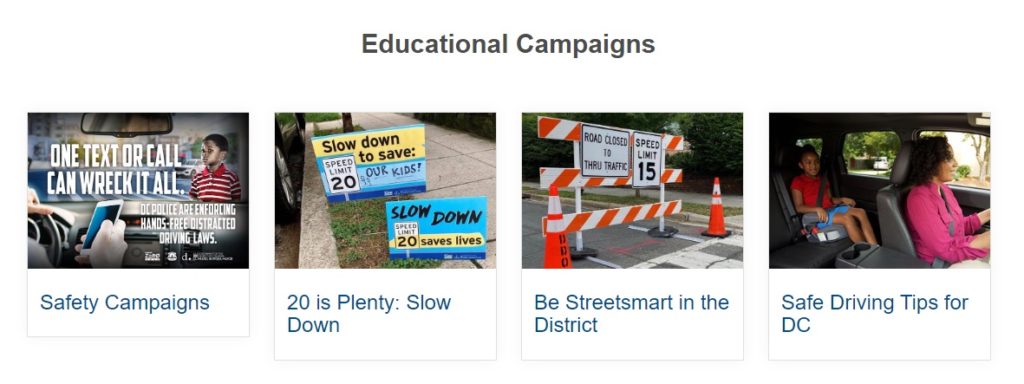
The safety campaigns target the biggest threats to the most vulnerable travelers on DC’s roadways. These include aggressive driving, impaired driving, occupant protection, pedestrian safety, and bicycle safety.
A link is also featured to Safety Grant information housed on DDOT’s Highway Safety Office page. This page also includes many links to safety programs, grants, procedure manuals, and publications.
This living document provides links to numerous helpful documents and publications.
A look at the Engineering page shows the significant progress made in designing solutions to benefit vehicular and pedestrian traffic, conveniently organized into a Safety Treatment Toolbox.
Expanding a section of the toolbox gives a wealth of information about each treatment “tool.”
A Safety Intervention dashboard gives insight into all the implementations of the safety toolbox tools that have occurred to date.
An Annual Safety Improvement Program dashboard gives insight into all the roadway and intersection improvements made to date.
Exploring the Crash Analysis page gives a deep dive into the data fueling the push for zero fatalities on D.C.’s roadways, including a Fatality and Injury dashboard with authoritative data provided by the Metropolitan Police Department.
Talk to SymGEO today if your municipality or agency is interested in setting your sights on a goal of zero fatalities on your roadways using a Vision Zero hub site – we are certified experts and are here to help.
